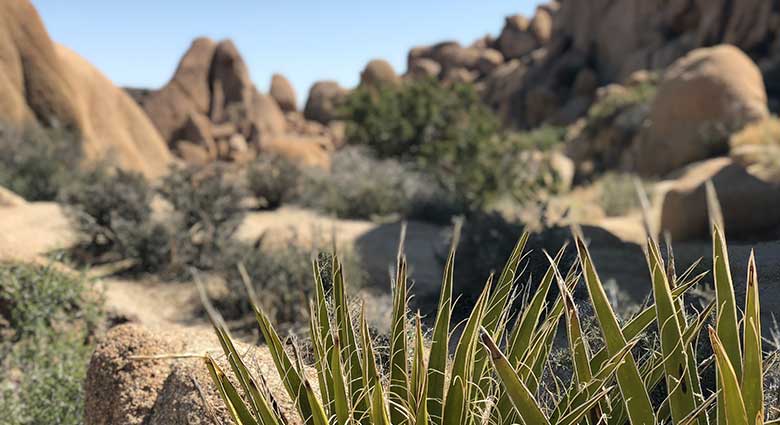Road Trip: Joshua Tree National Park
California may have earned a reputation for its breathtaking beaches and coastline, but travelers who venture into the state’s vast desert will be rewarded with a different version of beauty. A wild, mystical vibe permeates the landscape where the Mojave and Colorado Deserts collide just east of the Nevada border. Joshua Tree National Park spreads out across 800,000 arrid acres and attracts campers, climbers, hikers and stargazers all year long.
So What Are Joshua Trees?
They’re yuccas that grow as trees with clusters of spiky leaves. The name is rumored to come from early settlers (not a U2 album) who saw a resemblance to the Biblical figure Joshua reaching his hands up in prayer. Massive numbers of these trees are scattered across the region, giving the national park its moniker.
Why Visit?
The better question is: why not? A 2.5 hour drive from Los Angeles, it’s a picturesque road trip into an ancient desert unlike any other. It’s the epitome of “getting away from it all,” as you’ll discover there’s no lodging or electricity or lights or cell reception. This is the California High Desert; unplug from society and embrace the adventure! The varied terrain is a giant playground waiting to be explored.
What To Do?
Hiking
There are several entrances to the park, but the main one is in the town of Joshua Tree (a music and artist’s community that’s a cool destination unto itself). Buy a day pass or an annual pass at the entrance, grab a map, make sure you have water, and hit the trails. There are several areas to park near major trailheads, and the scenic hikes are some of the most beloved in the country. Some notable points of interest: Intersection Rock, Arch Rock, Skull Rock, Hidden Valley, and Keys View, which provides sweeping views of the Coachella Valley.
Stargazing
Don’t forget to look up. Throngs of visitors come to Joshua Tree to marvel at the night sky—a miraculous, glittering canvas above the desert landscape. The East side of the park is best for stargazing, as it’s the furthest from any city light pollution that might dim the spectacle.
Camping
More than 300 campsites are scattered throughout the park and run $15/day, and remember: there’s no electricity or running water here. If you aren’t into tent camping, check out lodging or AirBnB’s in the town of Joshua Tree.
Climbing
There are literally thousands of climbing and bouldering routes, plus plenty of experienced guides to help you scale the huge rock formations and take in the desert sights.
Wildflowers
Portions of the park explode with wildflowers in February, March and April, so bring your camera to capture the blooms. These months see a higher volume of visitors to Joshua Tree, not just for the flowers but for the great weather (the summer months can be especially hot).
Inspiration Uncategorized
